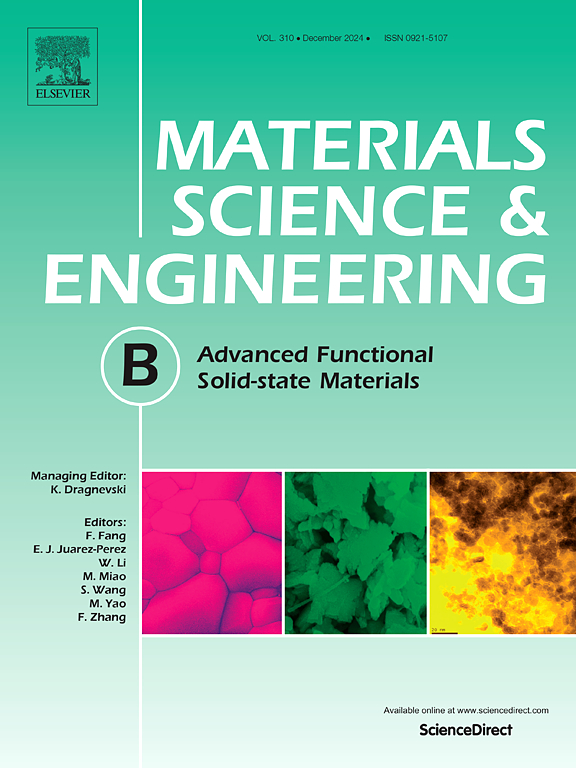绿色合成银纳米粒子和PVA复合膜具有增强的蛋白质吸附,电导率和介电常数:适合电子和生物医学应用的候选者
IF 4.6
3区 材料科学
Q2 MATERIALS SCIENCE, MULTIDISCIPLINARY
引用次数: 0
摘要
采用肉桂皮提取物(CBE)衍生银纳米粒子(AgNs)和聚乙烯醇(PVA),采用溶液浇铸法制备了CBE-PVA-AgNs薄膜。x射线衍射(XRD)研究证实结晶度增强,银峰出现在38.12°和44.41°附近。复合膜中银峰的小位移(~ 2°)表明agn和PVA相互作用。扫描电子显微镜研究规定银的晶粒尺寸在30- 50纳米之间变化。FTIR研究证实了agn与PVA的复杂相互作用。紫外可见光谱在430 nm左右有银峰存在。蛋白质吸附增强表明膜的生物相容性增强,这对其生物医学应用具有重要意义。与频率(0.0-10.0 kHz)相关的薄膜电导率(σ)和介电常数(ε)也大幅增加,介质损耗因子(tan δ <)较低;1.0)。该薄膜具有多种功能,适用于电子器件、光电子和包装等行业。本文章由计算机程序翻译,如有差异,请以英文原文为准。

Green synthesized silver nanoparticles and PVA composite films showing enhanced protein adsorption, conductivity and dielectric permittivity: Suitable candidate for electronic and biomedical applications
Cinnamon bark extract (CBE) derived silver nanoparticles (AgNs) and PVA have been used to prepare CBE-PVA-AgNs films by solution casting method. X-Ray diffraction (XRD) studies confirmed the enhancement of crystallinity and silver peaks appeared around 38.12° and 44.41°. Small shift of the silver peak (∼ 2°) in the composite film indicated interaction of AgNs and the PVA. Scanning electron microscope study specified silver grain size varying from 30- 50 nm.The FTIR study approves the complex interaction of the AgNs with the PVA. The UV–visible spectrum showed the presence of silver peak around 430 nm. Enhanced protein adsorption indicated increased biocompatibility of the films which is important for their biomedical applications. Frequency (0.0–10.0 kHz) dependent film conductivity (σ) and dielectric permittivity (ε) also increased largely showing low dielectric loss factor (tan δ < 1.0). The films exhibiting multifunctional properties are suitable for their applications in electronic devices, optoelectronics and packaging industries.
求助全文
通过发布文献求助,成功后即可免费获取论文全文。
去求助
来源期刊

Materials Science and Engineering: B
工程技术-材料科学:综合
CiteScore
5.60
自引率
2.80%
发文量
481
审稿时长
3.5 months
期刊介绍:
The journal provides an international medium for the publication of theoretical and experimental studies and reviews related to the electronic, electrochemical, ionic, magnetic, optical, and biosensing properties of solid state materials in bulk, thin film and particulate forms. Papers dealing with synthesis, processing, characterization, structure, physical properties and computational aspects of nano-crystalline, crystalline, amorphous and glassy forms of ceramics, semiconductors, layered insertion compounds, low-dimensional compounds and systems, fast-ion conductors, polymers and dielectrics are viewed as suitable for publication. Articles focused on nano-structured aspects of these advanced solid-state materials will also be considered suitable.
 求助内容:
求助内容: 应助结果提醒方式:
应助结果提醒方式:


